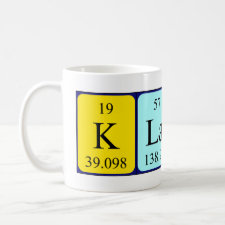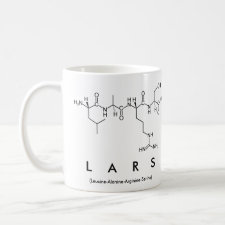
Authors: Andersson LI, Müller R, Vlatakis G, Mosbach K
Article Title: Mimics of the binding-sites of opioid receptors obtained by molecular imprinting of enkephalin and morphine.
Publication date: 1995
Journal: Proceedings of the National Academy of Sciences of the United States of America
Volume: 92
Issue: (11)
Page numbers: 4788-4792.
DOI: 10.1073/pnas.92.11.4788
Alternative URL: http://www.pnas.org/content/92/11/4788.full.pdf
Abstract: Molecular imprinting of morphine and the endogenous neuropeptide [Leu(5)]enkephalin (Leu-enkephalin) in methacrylic acid-ethylene glycol dimethacrylate copolymers is described, Such molecular imprints possess the capacity to mimic the binding activity of opioid receptors. The recognition properties of the resultant imprints were analyzed by radioactive ligand binding analysis, We demonstrate that imprinted polymers also show high binding affinity and selectivity in aqueous buffers, This is a major breakthrough for molecular imprinting technology, since the binding reaction occurs under conditions relevant to biological systems, The antimorphine imprints showed high binding affinity for morphine, with K-d values as low as 10(-7) M, and levels of selectivity similar to those of antibodies, Preparation of imprints against Leu-enkephalin was greatly facilitated by the use of the anilide derivative rather than the free peptide as the print molecule, due to improved solubility in the polymerization mixture, Free Leu-enkephalin was efficiently recognized by this polymer (K-d values as low as 10(-7) M were observed), Four tetra- and pentapeptides, with unrelated amino acid sequences, were not bound. The imprints showed only weak affinity for two D-amino acid containing analogues of Leu enkephalin, Enantioselective recognition of the L-enantiomer of phenylalanylglycine anilide, a truncated analogue of the N-terminal end of enkephalin, was observed,
Template and target information: [Leu5]enkephalin, Leu-enkephalin, morphine



Join the Society for Molecular Imprinting

New items RSS feed
Sign-up for e-mail updates:
Choose between receiving an occasional newsletter or more frequent e-mail alerts.
Click here to go to the sign-up page.
Is your name elemental or peptidic? Enter your name and find out by clicking either of the buttons below!
Other products you may like:
 MIPdatabase
MIPdatabase









